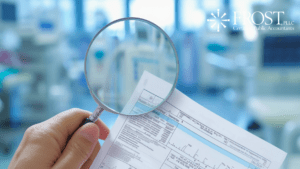Agricultural Audits: Ensuring Compliance and Financial Accuracy for Farms
Make Best Use Of Earnings: The Vital Guide to Food Handling Accountancy
This overview explores the elaborate connection in between cost management, labor effectiveness, and economic coverage, giving understandings that can improve operations and improve decision-making. Trick accountancy techniques, paired with the strategic use of technology, can transform monetary performance.
Comprehending Food Handling Prices

Basic material costs commonly represent the biggest portion of expenses, necessitating careful administration of sourcing and stock levels. Labor prices also play a crucial function, as proficient employees are vital for keeping high quality and effectiveness. Expenses prices, including energies, rental fee, and administrative costs, have to be checked to ensure they do not deteriorate profit margins.
Furthermore, devices upkeep and devaluation can impact long-lasting monetary health. Investing in contemporary, reliable equipment may incur higher preliminary expenses however can bring about reduced operational costs gradually. Recognizing these price parts allows food processing services to develop effective budgeting techniques, enhance resource allotment, and determine areas for expense reduction. Ultimately, an extensive grasp of food processing costs is important for notified decision-making and accomplishing sustainable growth within the industry.
Key Accounting Concepts
Efficient administration of food processing prices counts on a solid structure of accountancy principles. These concepts act as the framework for recording, examining, and translating monetary information, making certain that food processing businesses can properly evaluate their profitability and operational performance.
First, the principle of uniformity is crucial. It mandates that businesses use the same audit techniques with time, promoting reliable contrasts of economic declarations. Next, the matching concept calls for that expenses be videotaped in the very same period as the revenues they assist create, which is important for exact profit dimension.
Additionally, the expense concept dictates that possessions need to be tape-recorded at their initial acquisition price, offering a clear basis for devaluation and asset appraisal. The amassing basis of accounting also plays a considerable duty, as it recognizes revenues and costs when they are incurred, rather than when money adjustments hands. This approach offers a much more practical view of monetary health and wellness.
Last but not least, the conservatism principle recommends that capacity costs and responsibilities should be recognized as soon as they are likely, while profits need to just be identified when they are ensured. By sticking to these key accounting principles, food processing companies can enhance their financial oversight and tactical decision-making.
Financial Reporting Fundamentals
Monetary reporting is essential for food processing firms, as it supplies a transparent view of their economic efficiency and setting. Precise and prompt economic reports enable monitoring to make enlightened decisions, ensuring the business stays competitive and successful in a tough market.
Key elements of economic reporting consist of the revenue declaration, balance sheet, and cash circulation statement. The revenue statement supplies insights right into profits, expenses, and internet revenue, revealing operational efficiency. The equilibrium sheet presents a picture of the company's possessions, liabilities, and equity, giving an understanding of financial security and solvency. The cash circulation statement tracks the inflow and outflow of cash money, assisting organizations handle liquidity efficiently.
Furthermore, sticking to Usually Accepted Bookkeeping Concepts (GAAP) or International Financial Coverage Standards (IFRS) is vital for uniformity and reliability. Routine economic coverage not only aids interior administration yet additionally fulfills external obligations to stakeholders, capitalists, and governing bodies.
Ultimately, robust monetary reporting is crucial for critical preparation and threat monitoring, allowing food handling firms to browse market fluctuations and take advantage of growth chances successfully.
Expense Control Approaches
Keeping a solid economic placement is not solely about accurate coverage; it additionally entails applying reliable price control methods (Agriculture accounting). In the food processing industry, where margins can be tight, controlling prices is essential for taking full advantage of earnings
One secret technique is to conduct regular cost evaluation. By reviewing the prices linked with raw products, labor, and overhead, businesses can recognize locations where cost savings can be accomplished. Carrying out a standardized budgeting procedure permits much better forecasting and surveillance of costs, allowing timely changes to be made.
An additional efficient method is to negotiate desirable terms with vendors. Establishing lasting click site connections can lead to quantity discounts, which directly decrease the price of products sold. In addition, buying staff member training can improve productivity and minimize waste, adding to overall price effectiveness.
Lastly, taking on lean production principles can simplify operations by removing unnecessary actions in the production procedure. This not only lessens waste but likewise boosts high quality and rate. By concentrating on these price control methods, food handling companies can improve their economic efficiency and guarantee lasting development in a competitive market.
Leveraging Technology in Bookkeeping
Welcoming technology in accountancy can significantly the original source improve effectiveness and precision within the food processing market. By integrating sophisticated software program solutions, mixer can automate repeated jobs such as invoicing, payroll, and inventory tracking. This not just minimizes the possibility for human error however likewise permits money groups to concentrate on strategic decision-making instead of mundane administrative tasks.
Cloud-based accountancy systems give real-time access to financial data, allowing companies to keep an eye on capital, costs, and earnings from anywhere - Agriculture accounting. This adaptability is specifically helpful in a dynamic sector where cost changes and supply chain obstacles are commonplace. Additionally, utilizing data analytics tools equips business to draw out actionable insights from their financial information, bring about educated service decisions that can drive earnings
Additionally, leveraging innovations like Expert system (AI) and Machine Learning (ML) can boost projecting abilities, permitting far better need planning and source appropriation. As governing compliance becomes significantly complicated, innovation can also aid in making sure adherence to financial reporting criteria and food security policies. Inevitably, purchasing technological innovations in accountancy is not merely a functional improvement; it is a critical requirement for food processing business aiming to prosper in a competitive industry.

Final Thought
In final thought, effective administration of food processing costs is essential for boosting productivity within the sector. Carrying out robust cost control approaches and leveraging innovation for automation and data analytics further maximize functional efficiency.
Understanding the costs linked with food processing is crucial for organizations intending to maintain productivity and competition in a dynamic sector. Comprehending these cost parts enables food his comment is here handling services to develop reliable budgeting methods, optimize source allocation, and recognize areas for expense decrease. Inevitably, a detailed grasp of food handling costs is crucial for educated decision-making and achieving lasting growth within the sector.
Additionally, the price principle determines that assets must be recorded at their original acquisition cost, supplying a clear basis for depreciation and property assessment. By concentrating on these price control techniques, food handling companies can boost their monetary efficiency and ensure lasting development in a competitive market.